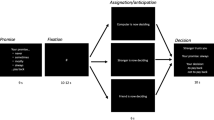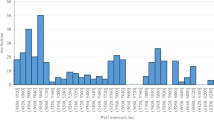Abstract
THE experiments dealing with the amplitudes of the partials from a struck string are many, and the conclusions are varied. For example, the experiments of W. H. George (Phil. Mag., vol. 50, August 1925) show maxima at various points, and he arrives at the conclusion that the amplitude of the fundamental attains a maximum at a small distance from the bridge, while S. K. Dutta found that it attained a maximum at a distance of 1/91, where 1 = length of string. Again, Berry's conclusion is that forced vibration is a maximum at 1/91. Experiments made by me on the pianoforte have shown that the elasticity of the hammer must also be considered when calculating the duration of contact, which is of fundamental importance in the tone of the struck strings.
This is a preview of subscription content, access via your institution
Access options
Subscribe to this journal
Receive 51 print issues and online access
$199.00 per year
only $3.90 per issue
Buy this article
- Purchase on SpringerLink
- Instant access to full article PDF
Prices may be subject to local taxes which are calculated during checkout
Similar content being viewed by others
Author information
Authors and Affiliations
Rights and permissions
About this article
Cite this article
GHOSH, R. Choice of the Striking Point in the Pianoforte. Nature 116, 575 (1925). https://doi.org/10.1038/116575b0
Issue date:
DOI: https://doi.org/10.1038/116575b0



